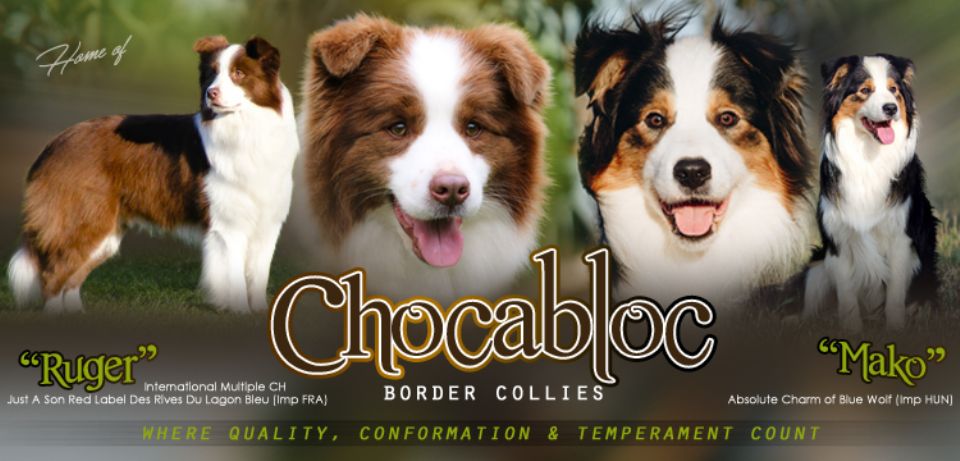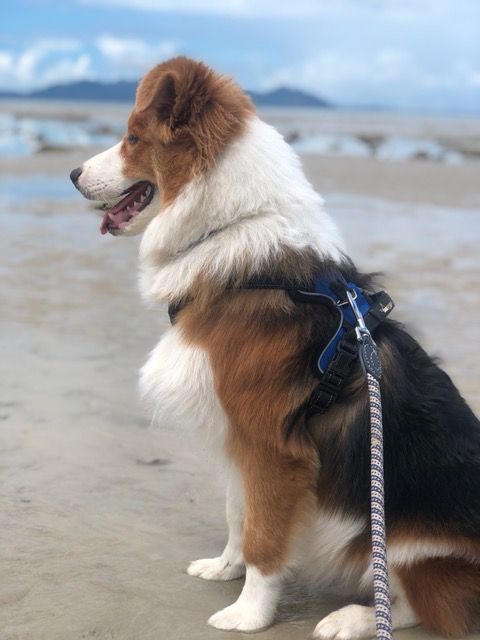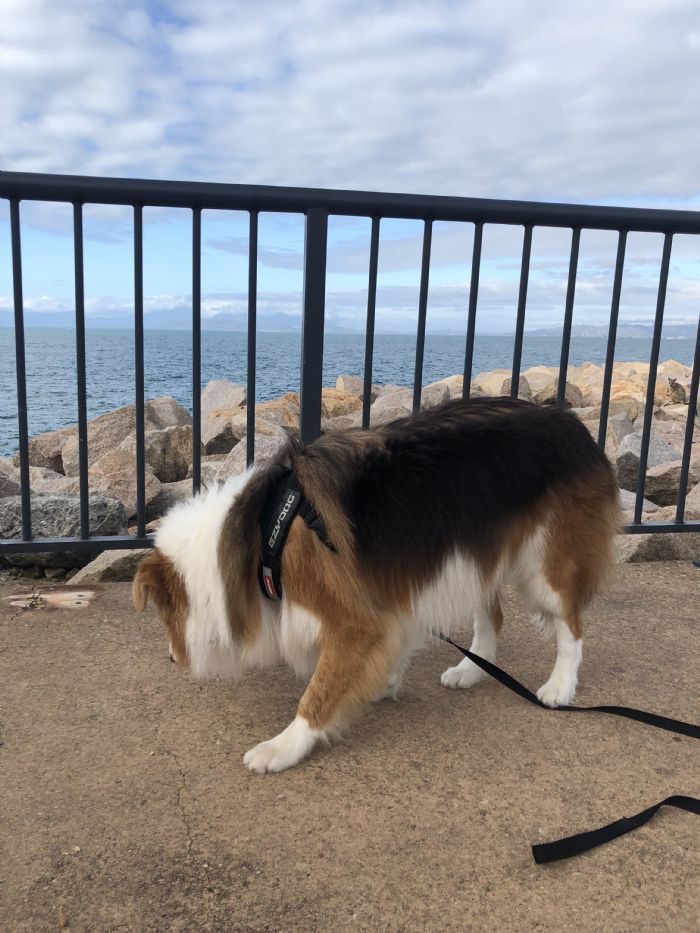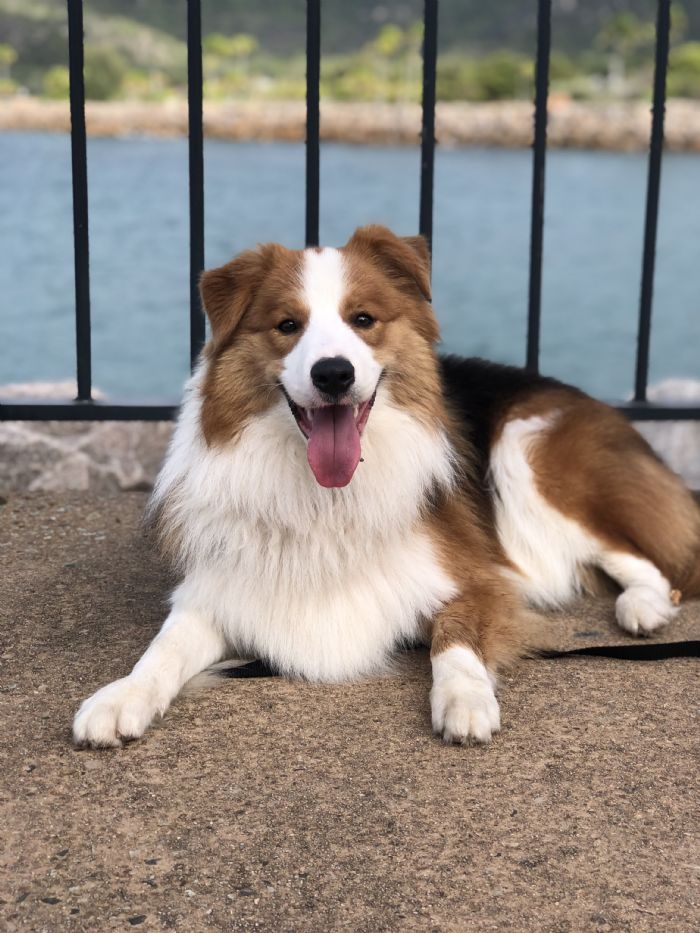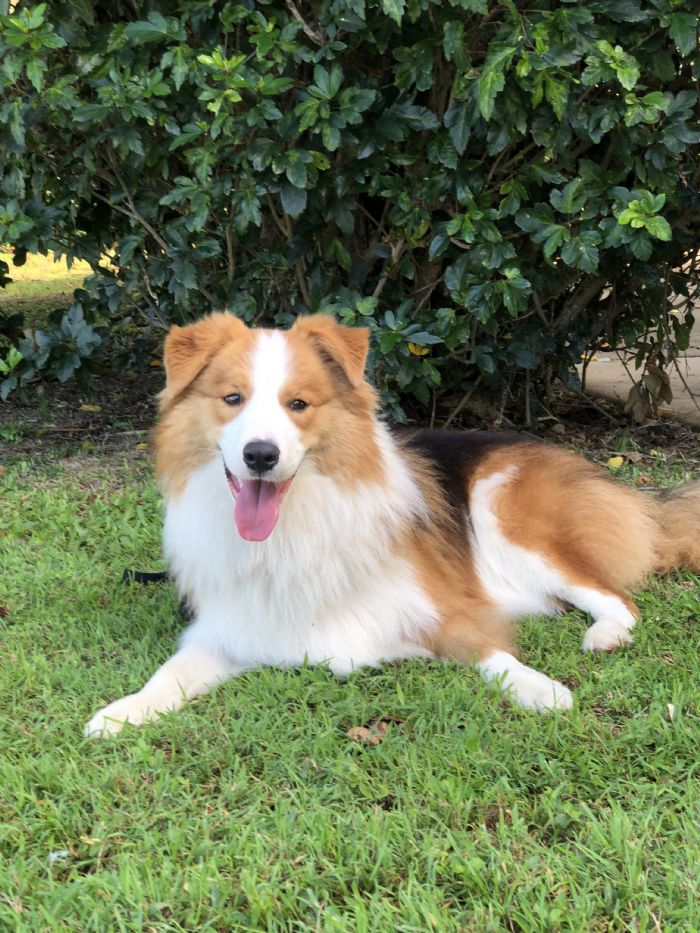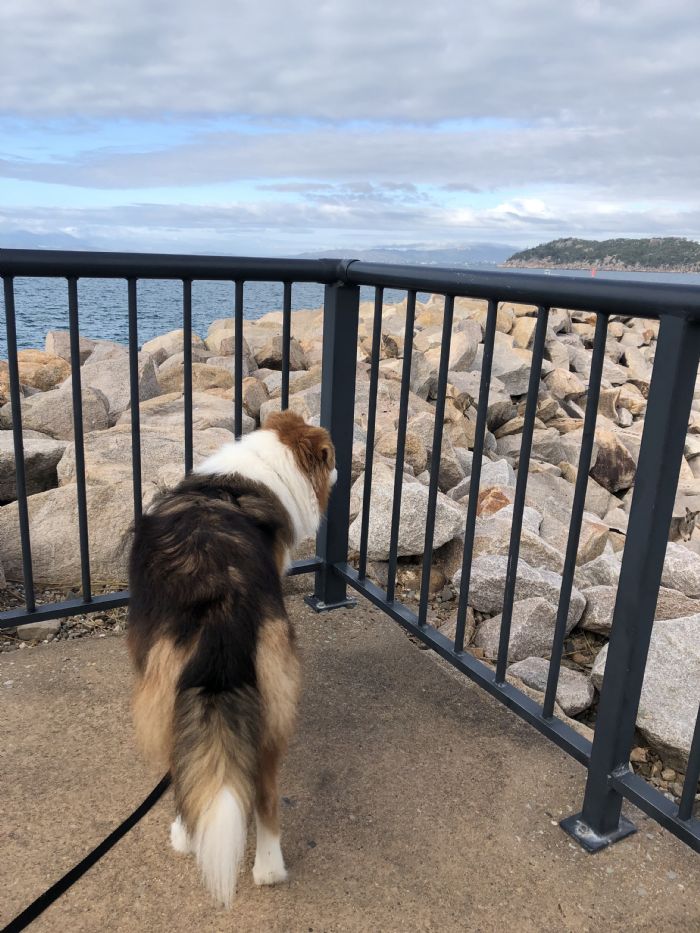Border Collie Coat Colours
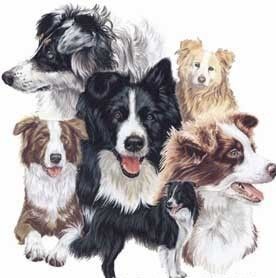
Contrary to common belief Border Collies come in a variety of different coat colours, not just the traditional Black and White. I have added descriptions of a few different coat colours below but these are by no means all of the colours of the Border Collie.
BLACK & WHITE
The traditional Border Collie coat colour. A glossy black coat with white points, chest, collar and blaze. The eyes can be dark brown, medium brown, hazel & sky blue although brown is the most accepted colour.
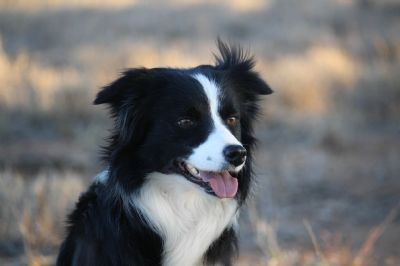
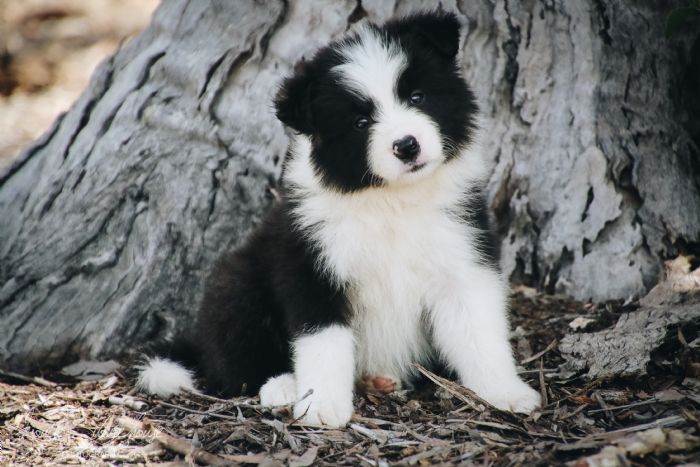
Our beautiful girl Mia and our lovely home bred puppy Clotilde.
TRI-COLOUR
The traditional tri-coloured border collie has a black base coat with tan points above the eyes, on the cheeks, on the legs, the bottom and in the ears. The tan markings can be light cream through to a dark golden colour and can be small or very predominant. The base coat colour can be colours other than black, for example, chocolate tri, blue tri, lilac tri and a variety of merle tris. The base coat colour will determine the eye colour of each individual tri-coloured dog.
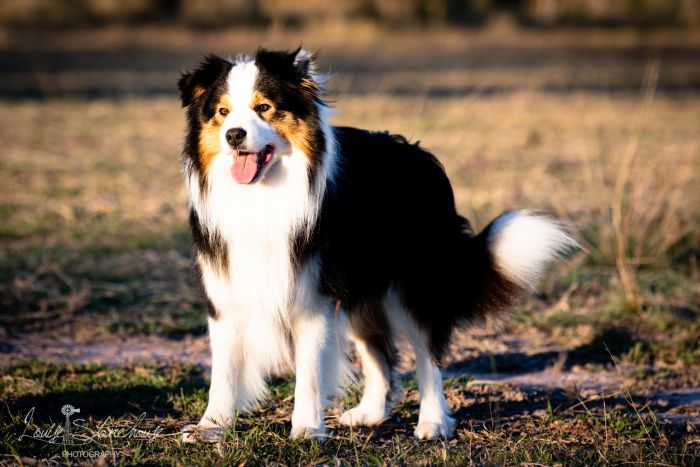

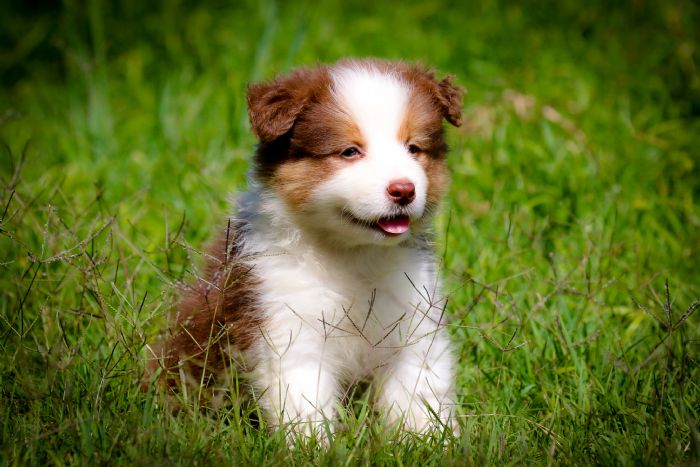
Black tri Blue tri Chocolate Tri
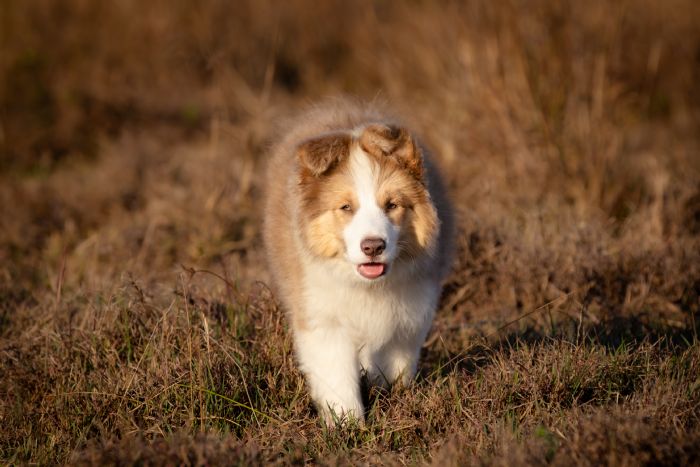
Lilac Tri
MERLE
Merle is a coat pattern. The pattern can be expressed on a dog that has either a blue, chocolate or lilac base coat with darker and lighter patches on the coat. Eyes of a merle dog are sometimes blue, brown or marbled. One eye may be one colour and the other may be a different colour. The nose leather can be black, brown, blue/grey, pinkish or even mottled depending on the dogs individual base coat colour.
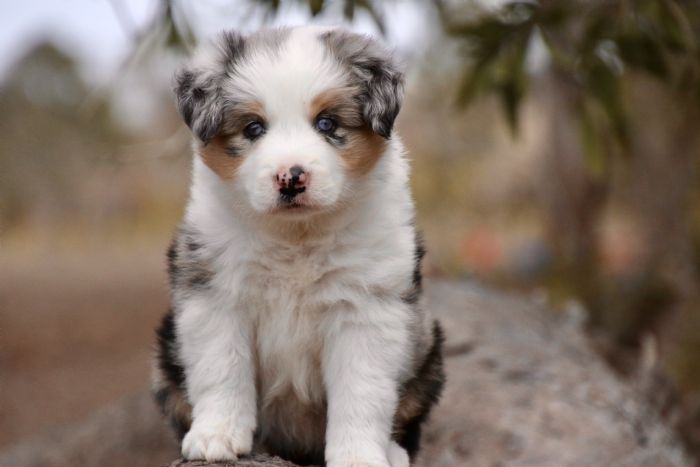

Miss Retro at 5 weeks of age. She's a blue merle tricolour Border Collie.
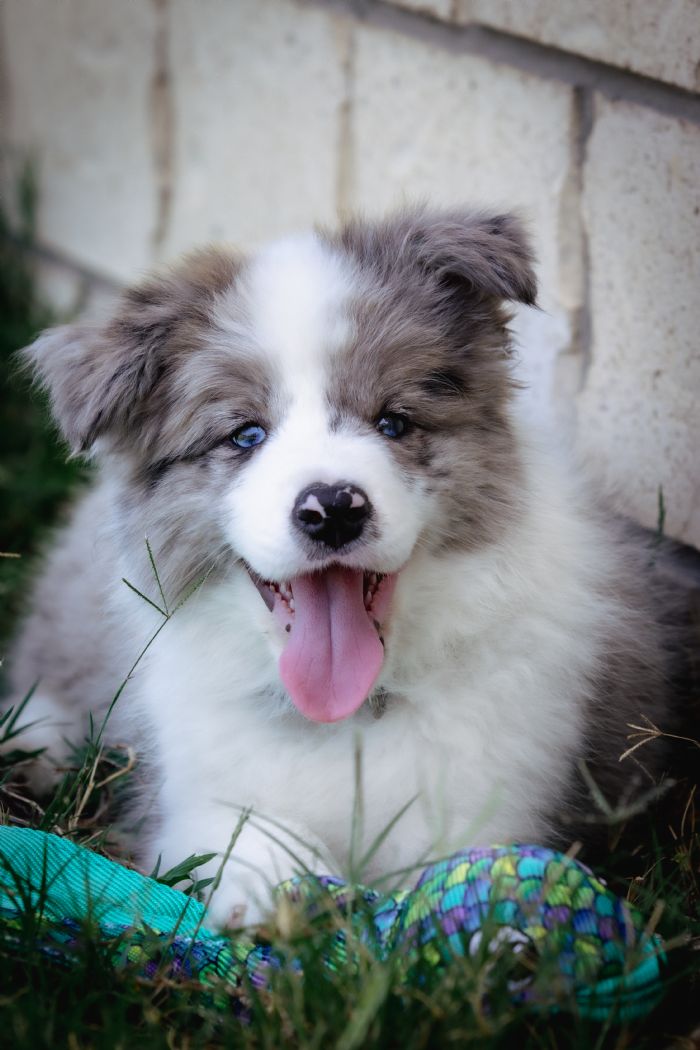
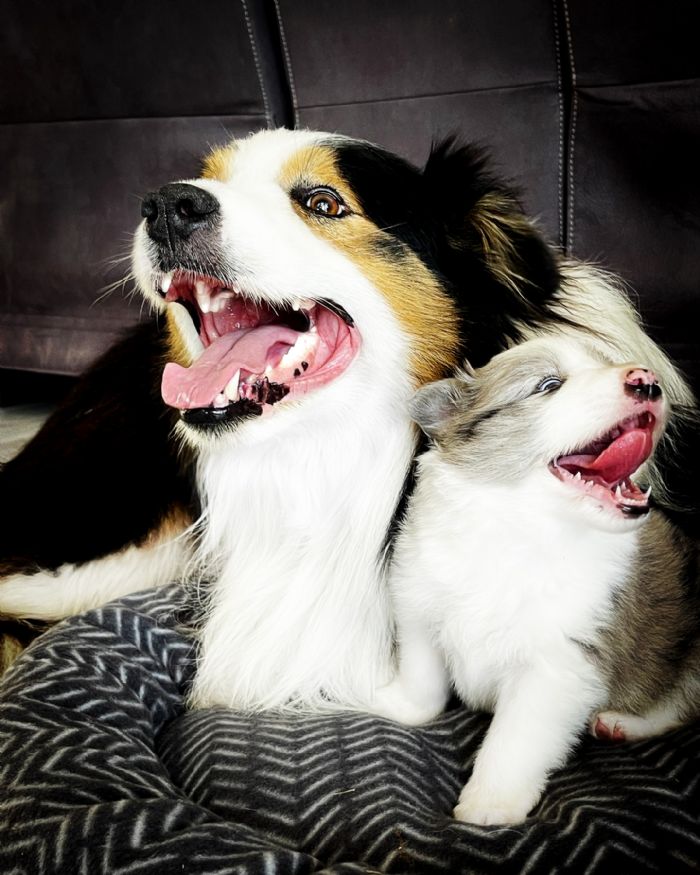
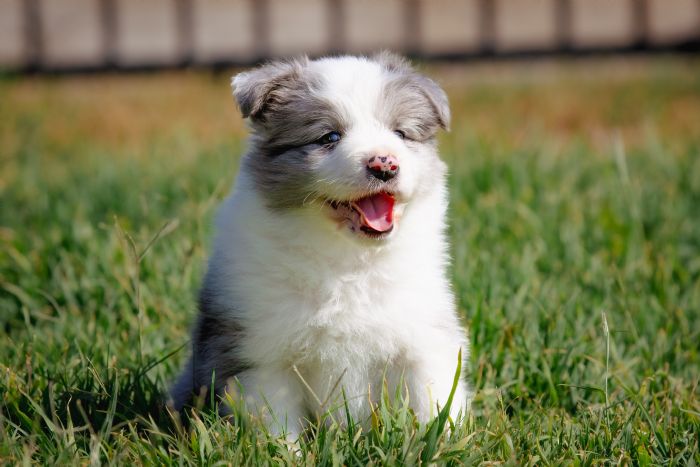
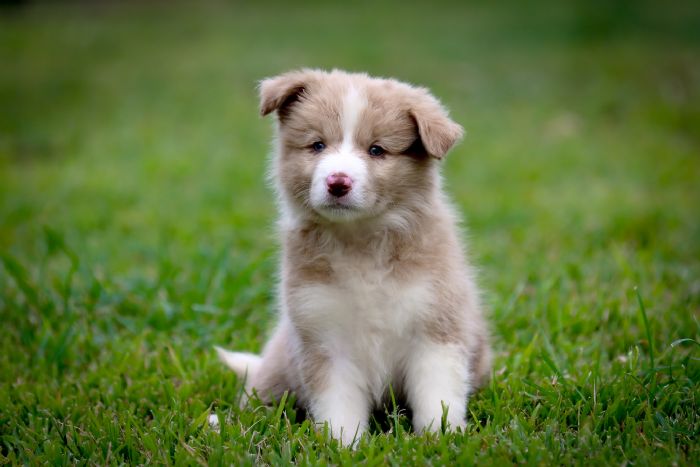
SABLE & WHITE
Sable is a very interesting colour in that each individual hair is more than one colour/shade. Typically each hair will be black at the root and a sandy brown colour at the tip. The sable pattern can act on any base colour that the Border Collie comes in so sable can affect black, chocolate, blue and lilac. Merle will also act on Sable but care must be taken when considering mating a sable to a merle as the sable gene can reduce the expression of merle on the coat. This could lead to producing phantom merle pups if the dog was accidentally mated to a merle.
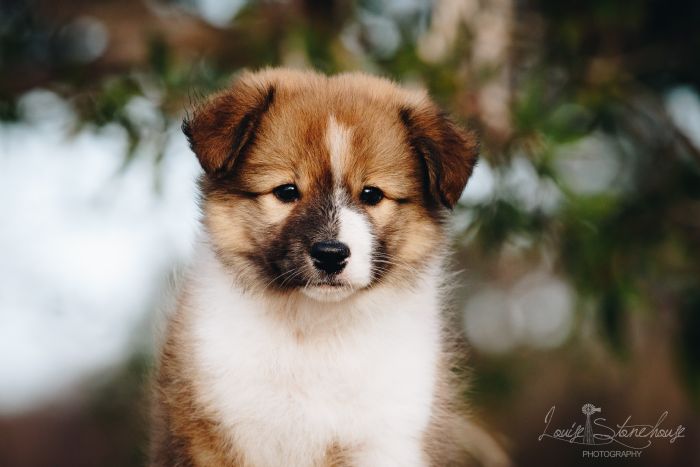
Miss Mynx at 7 weeks of age.
BLUE & WHITE
Blue is a dilute colour. It can appear as a washed out black and white to the untrained eye. Blue and white Border Collies are a beautiful dark steel grey colour with white points, chest, collar and blaze. The eyes can be dark brown, medium brown, hazel & sky blue. They have a blue/grey nose leather.
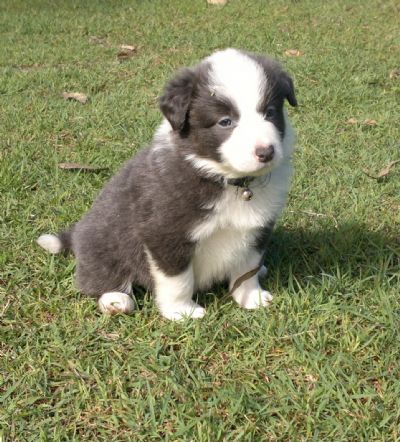
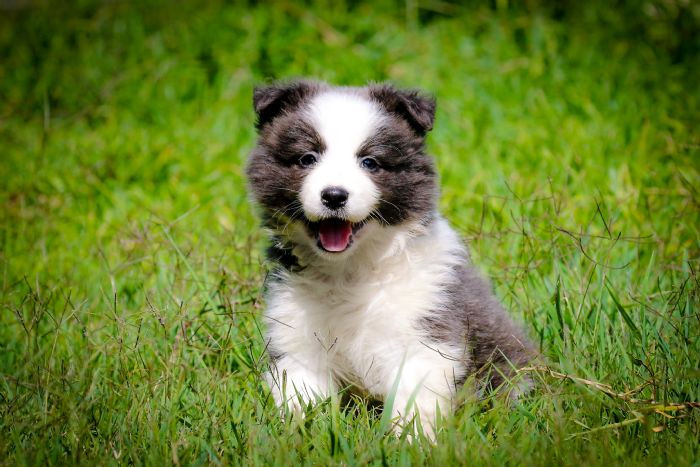
Lacey Ivy
RED & WHITE
The coat colours of an ee red and white Border Collie can vary quite a lot. Some will be a deep red colour whereas others can be only a light cream. They will still have white points, chest, collar and blaze. Eye colour can be most colours. A Border Collie who is ee red can have a nose leather that is brown, blue, lilac or black depending on the dogs individual genetic makeup.
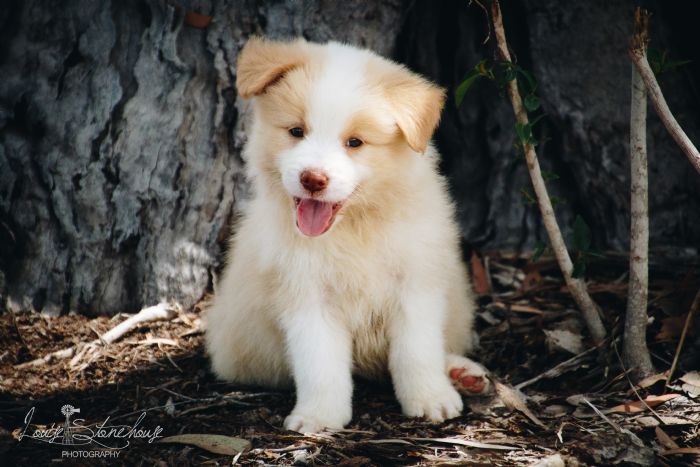
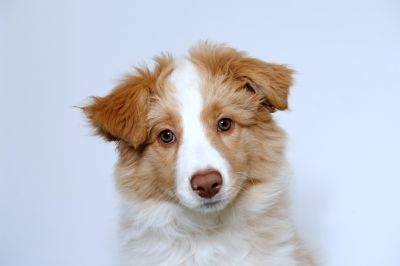
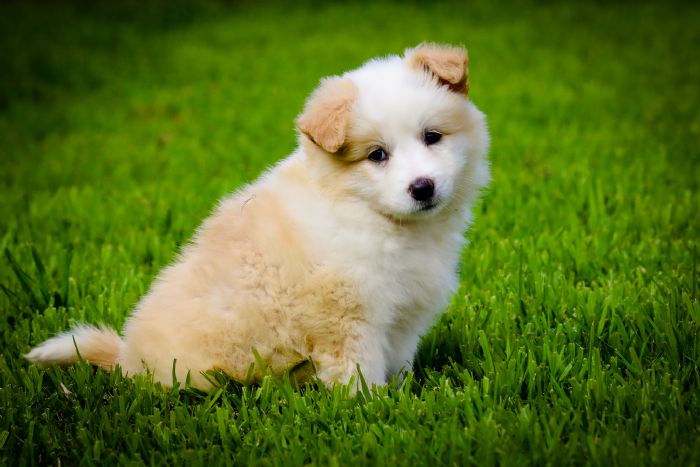
Vulcan, our home bred red boy and our home bred red girls- Chocabloc Charlie Kerby and Chocabloc Just A Brandy Neat.
CHOCOLATE & WHITE
Chocolate and white Border Collies have a brown coat with white points, chest, collar and blaze. The brown base can vary from dark to light chocolate brown. The eyes will be dark brown, medium brown, greenish or even a golden yellow.
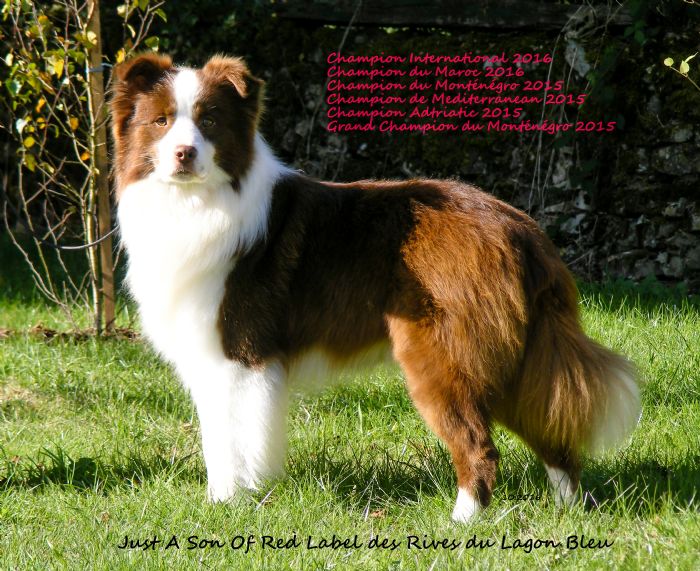
Ruger
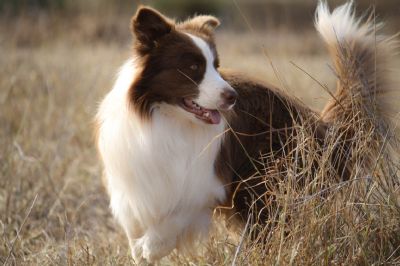
Zeke
Rogue
LILAC & WHITE
Lilac and white is also a dilute colour. The main coat colour can appear as a washed out or flat shade of chocolate with white points, chest, collar and blaze. They can have brown eyes and a pinkish nose leather. Miss Grey shown below in the first two photos is a home bred lilac tri-colour and Darcy at the bottom is a home bred lilac and white boy.
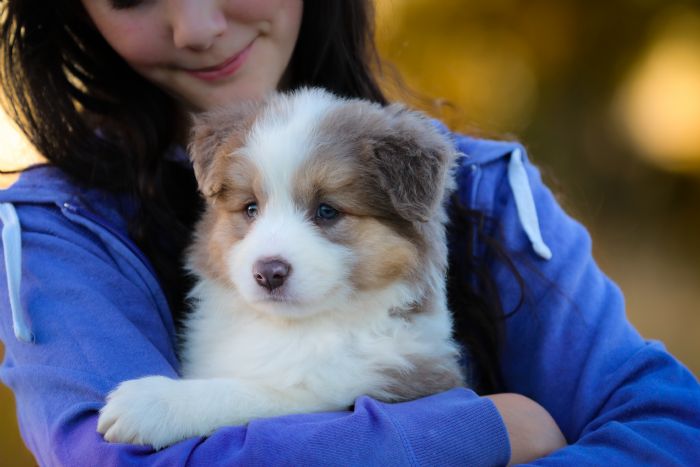

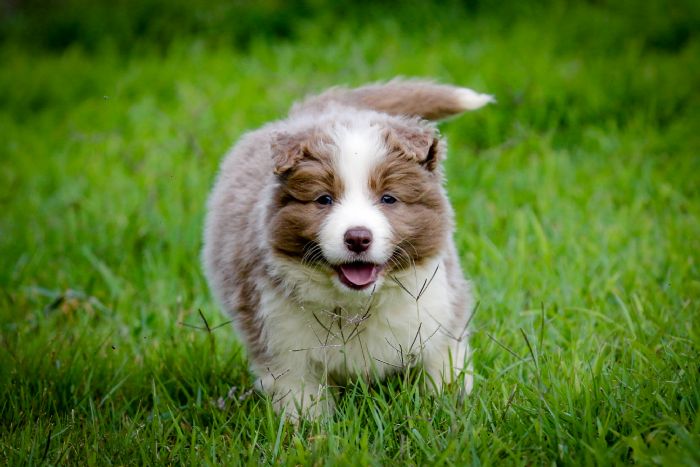
SADDLE TAN
Saddle tan or Saddleback is a very interesting pattern. At first glance it can look a bit like the traditional Tri-colour, having a normal base colour with tan on the face and under the tail. The difference with Saddle Tan is that over time, the tricolour progressively spreads to cover more of the base colour leaving the dog with the darker base colouring over the back, like a saddle. We have bred several here at Chocabloc over the years, both black saddle tan and chocolate saddle tan. We look forward to them discovering more about it through genetic exploration and hopefully being able to offer a test for it here in Australia in the future. See the below photos of Bali, one of our homebred black saddle tan boys and of Shardi, a home bred chocolate saddle tan girl as they mature. You will notice that the saddle pattern becomes more pronounced and the tan takes over.
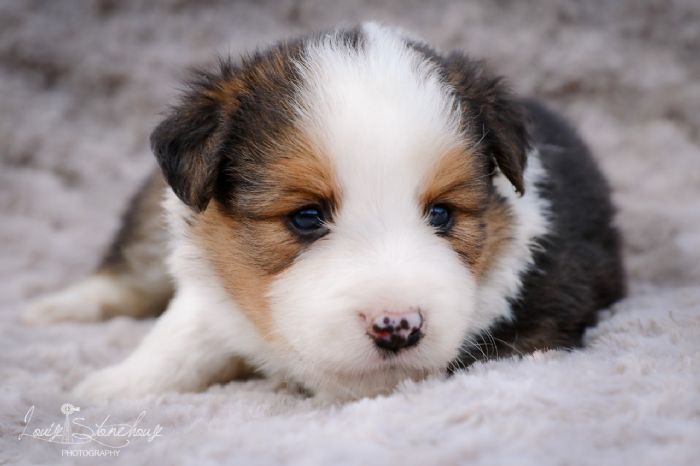
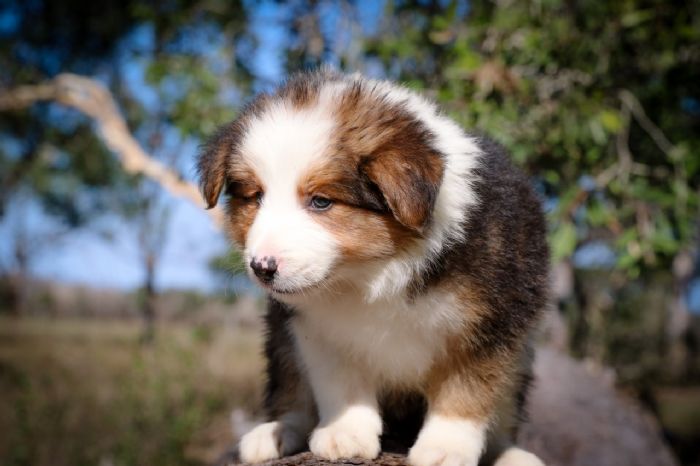
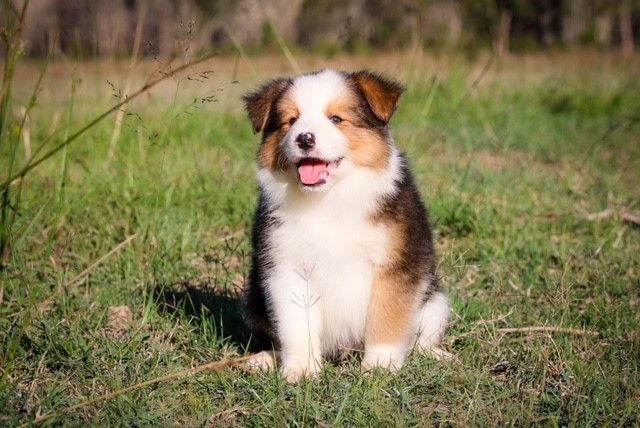
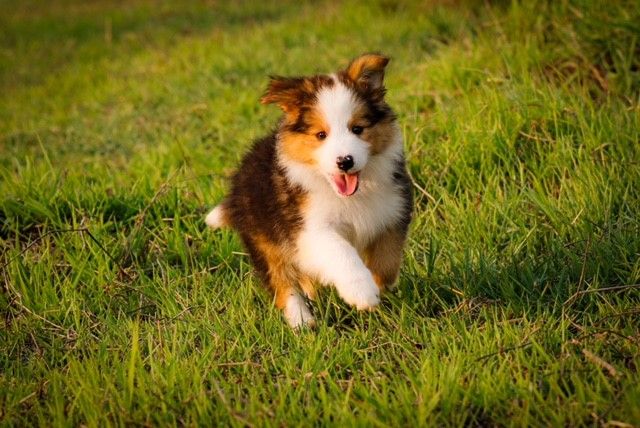
Bali
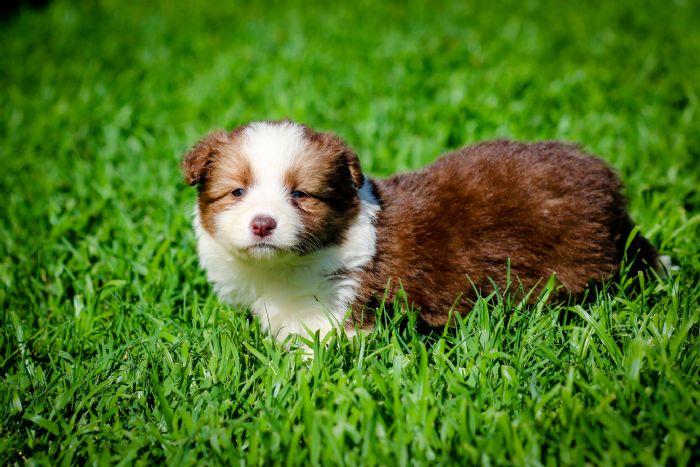
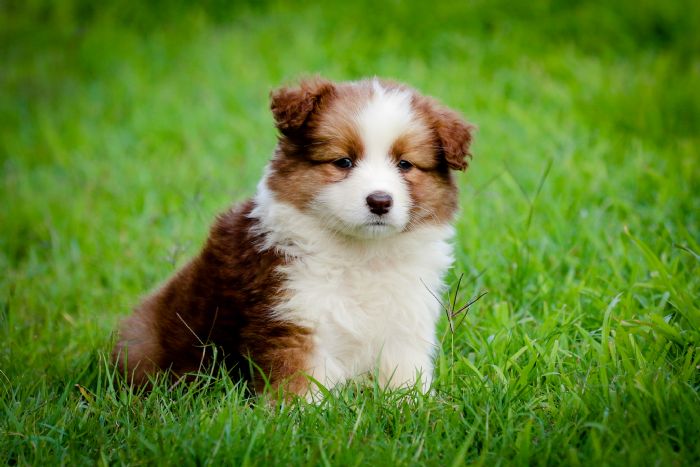
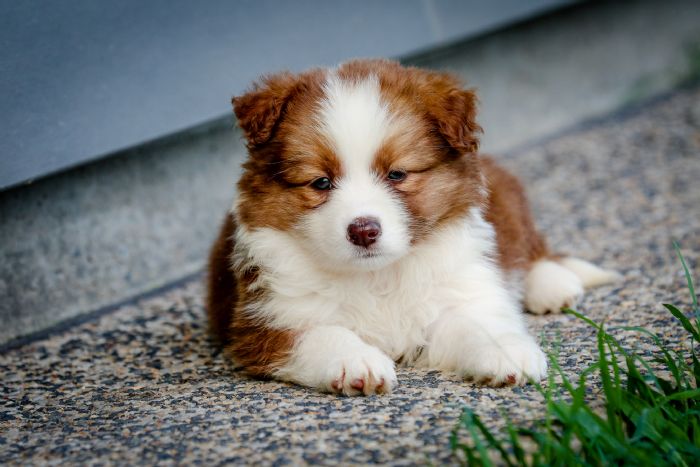
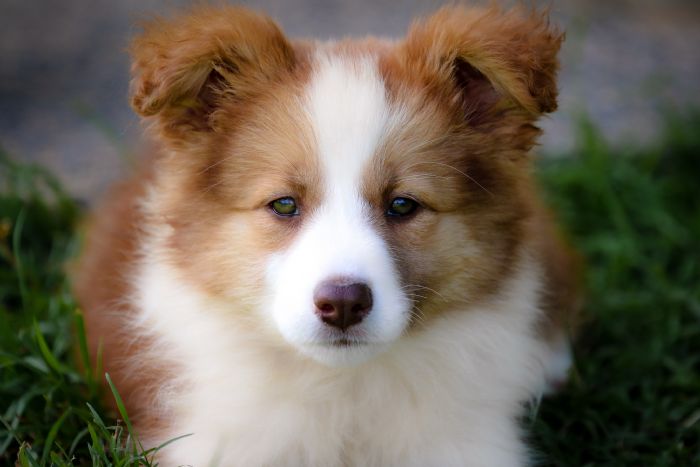
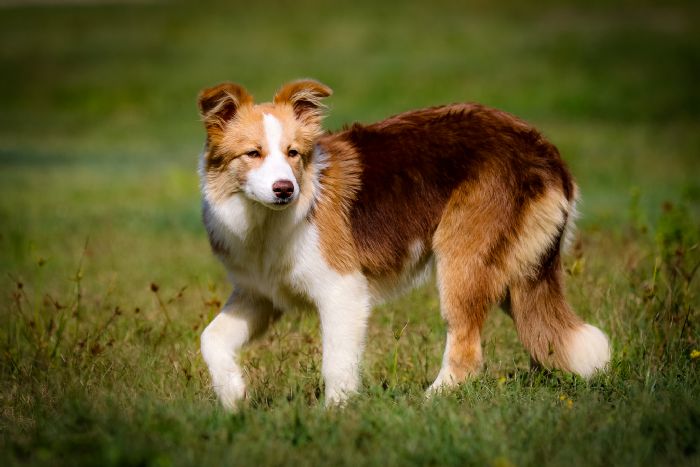
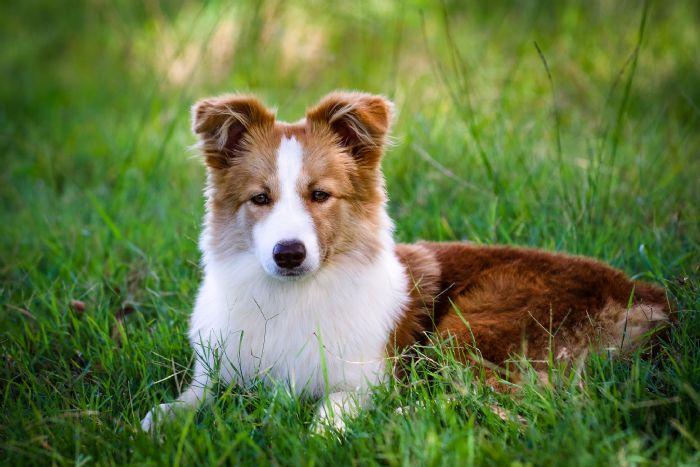
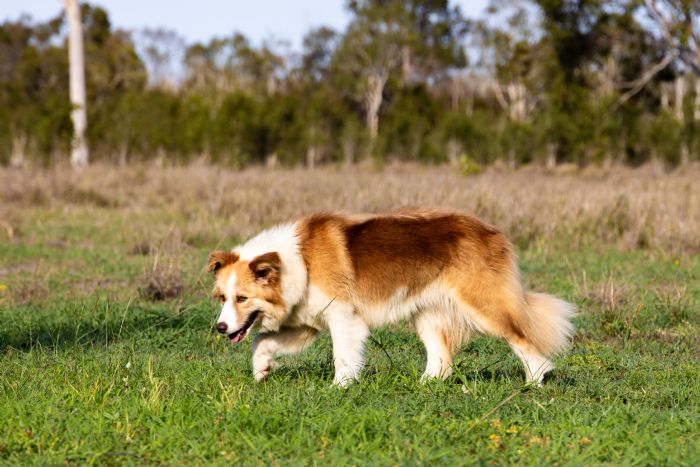
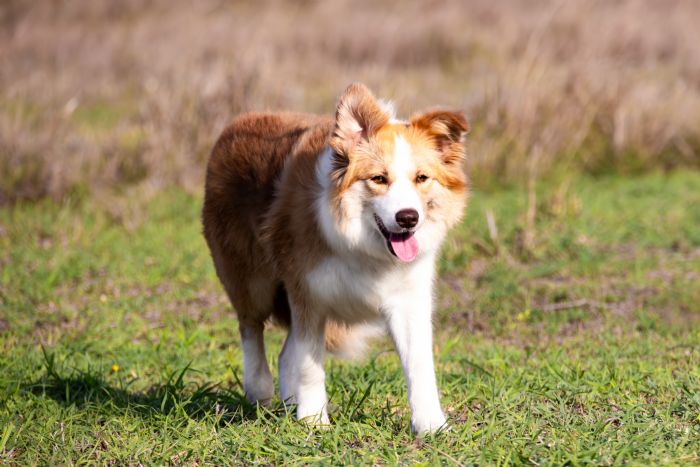
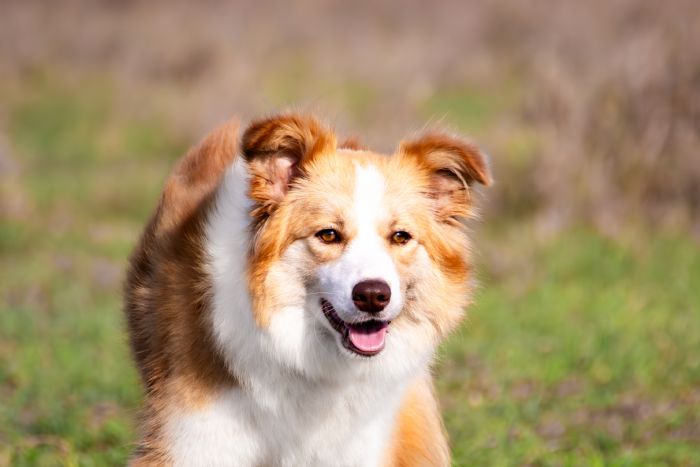
Shardi
COAT TYPE
Another common misconception is that a Border Collie only comes with a long, thick coat. In fact Border Collies come in various coats. They can have a short, sleek coat called a Smooth Coat. They can have a long, thick flowing coat known as a Rough Coat which is commonly seen on the Border Collie in the show ring. There are also variations in between these two coat lengths, such as a medium coat and the short coat which is often preferred in a working Border Collie. Then there is the coat texture, it can be fine, silky soft hair or it can be a think coarse hair and once again there are variations in between.
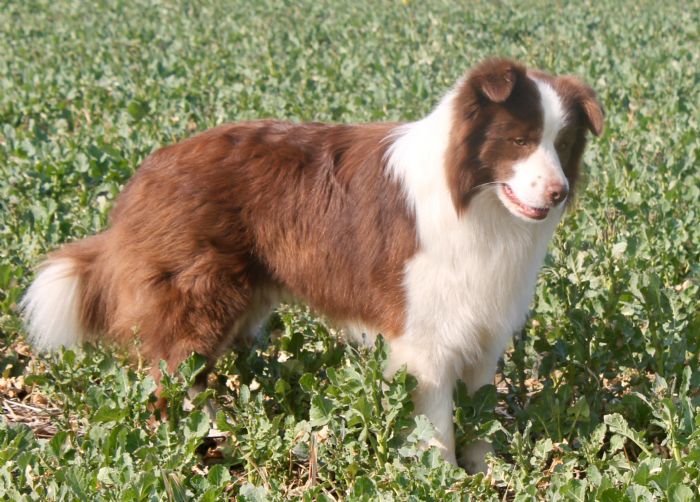
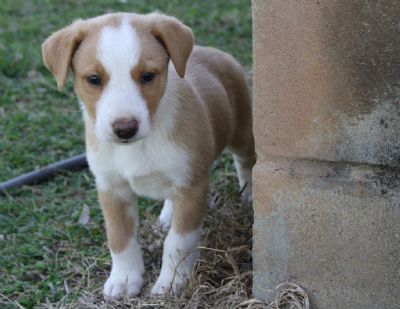
Ticking is a gene that causes flecks or spots of colour to appear in the white parts of the dog. The dog may only have slight ticking or could be very heavily ticked. Areas where ticking appear most commonly is on the legs and around the muzzle area although some dogs may have ticking over their entire body. Ticking develops over time so a young dog who displays a small degree of the patterning will most likely continue to develop more flecks/spots as it matures.
I hope you have found this information interesting and informative. It is by no means conclusive and if you go to my Interesting Links page you will find other sites that go into this information a little deeper, including information on colour genetics. Enjoy finding out more about this amazing breed, the Border Collie!
If anyone has photos of dogs in the above colours that they would like to donate to this page feel free to contact me, it would be much appreciated!
Contact Details
Louise Stonehouse
Wide Bay QLD, Australia
Email : [email protected]
